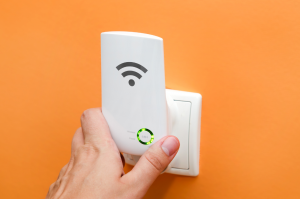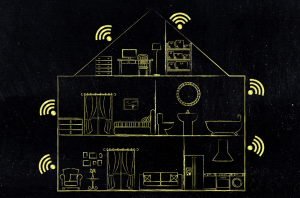Everything You Need to Know About Wi-Fi Extenders
 Have you ever been sitting in a spot in your home and noticed that your Internet connection isn’t working as quickly as you would like? This could be your bedroom, a room in the back of your home, or even your basement. It might have nothing to do with your Internet provider but more with your Wi-Fi connectivity. These areas are commonly known as a "dead zone." The size of your home can impact the speed of your Internet. Many factors would cause this: Wi-Fi coverage, wiring and infrastructure, network congestion, or router placement.
Have you ever been sitting in a spot in your home and noticed that your Internet connection isn’t working as quickly as you would like? This could be your bedroom, a room in the back of your home, or even your basement. It might have nothing to do with your Internet provider but more with your Wi-Fi connectivity. These areas are commonly known as a "dead zone." The size of your home can impact the speed of your Internet. Many factors would cause this: Wi-Fi coverage, wiring and infrastructure, network congestion, or router placement.
When you have interruptions in your Wi-Fi coverage, this could mean that you are too far away from your access point. When your router is enclosed, the connection could be obstructed by obstacles such as walls or cabinets. That would cause you to have weaker signals and low connection in certain areas of your home.
Fiber Internet, especially in residential areas, is becoming essential. We want to ensure that you have service with as few to no interruptions as possible. Pavlov Media offers extenders that will help spread your connection and speed to all areas of your home. Below, I will explain not only extenders but also mesh Wi-Fi systems.
Wi-Fi Extenders
Wi-Fi extenders are small devices that replicate your Wi-Fi signal from your router to expand coverage to other areas in your home. Some people also use extenders to give specific rooms in their homes a speed boost, such as a home office or basement living area. The extenders work by receiving your Wi-Fi signal from your router and replicating it to broadcast to areas of your home where the signal might be weak or nonexistent.
Wi-Fi extenders typically make a new wireless network with a new name and password. The devices within the range will then be able to connect to the new network to receive the replicated speed. Some extenders will have the ability to use your original network username and password (SSID). It is also important to note that although extenders will benefit your dead zones by replicating your Wi-Fi signal, placement is very important. Signals can be affected by factors such as distance from the router, obstructions, and interference from other devices.
Mesh Wi-Fi Systems
Other options, such as mesh Wi-Fi systems, allow you to gain signals in your dead zones. Mesh systems work a little bit differently than extenders. Mesh systems come with multiple units. They will all work together to communicate with each other and the home's router. You would want to place these strategically throughout your home.
 The mesh units will all communicate with each other to determine the best path for data transmission. If one unit becomes disconnected or fails, the other units will automatically reroute the data through alternative paths to ensure that you have a continuous connection to your network. Also, the devices that you have connected to your mesh system, can move around seamlessly within your coverage area without experiencing any connection drops. Your device will automatically connect to the unit with the strongest signal!
The mesh units will all communicate with each other to determine the best path for data transmission. If one unit becomes disconnected or fails, the other units will automatically reroute the data through alternative paths to ensure that you have a continuous connection to your network. Also, the devices that you have connected to your mesh system, can move around seamlessly within your coverage area without experiencing any connection drops. Your device will automatically connect to the unit with the strongest signal!
Another pro to having a mesh system to provide coverage in all areas of your home is, unlike traditional extenders you will only need to use one SSID (network name). This will simplify your connectivity as you won't have to switch between networks while moving around.
All in all, both Wi-Fi extenders and mesh Wi-Fi systems will be great options to get a good signal reach to all areas of your home with residential fiber. Wi-Fi extenders are simpler and more affordable solutions for improving Wi-Fi coverage in specific areas, but they may suffer from performance limitations and network disruptions. Wi-Fi mesh systems offer better performance, seamless roaming, and scalability, making them ideal for larger homes or offices with multiple devices and coverage challenges.




